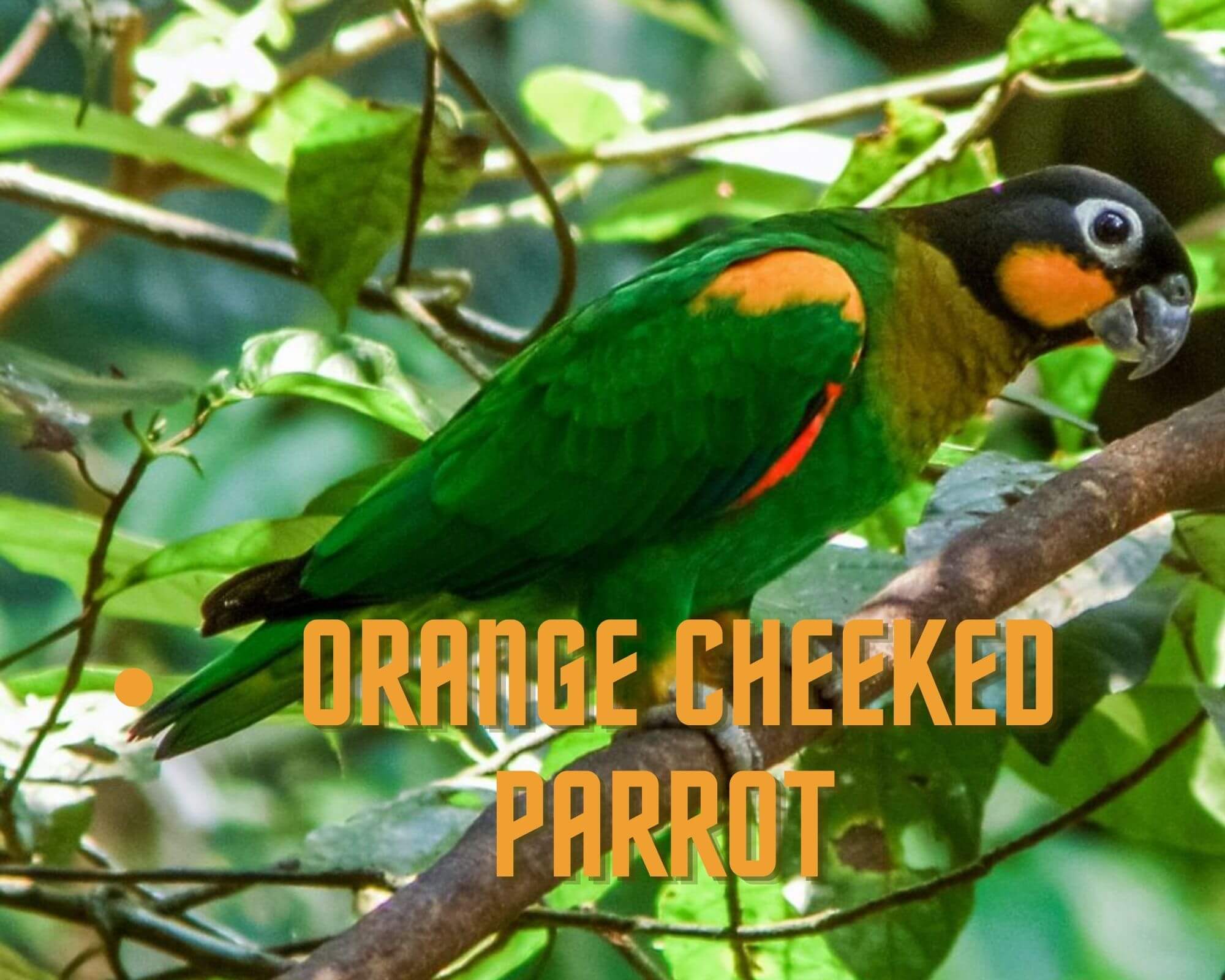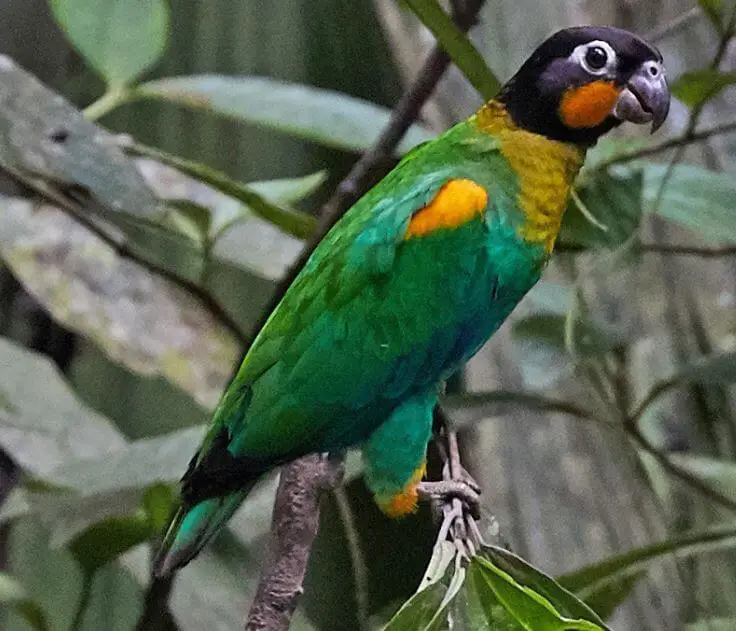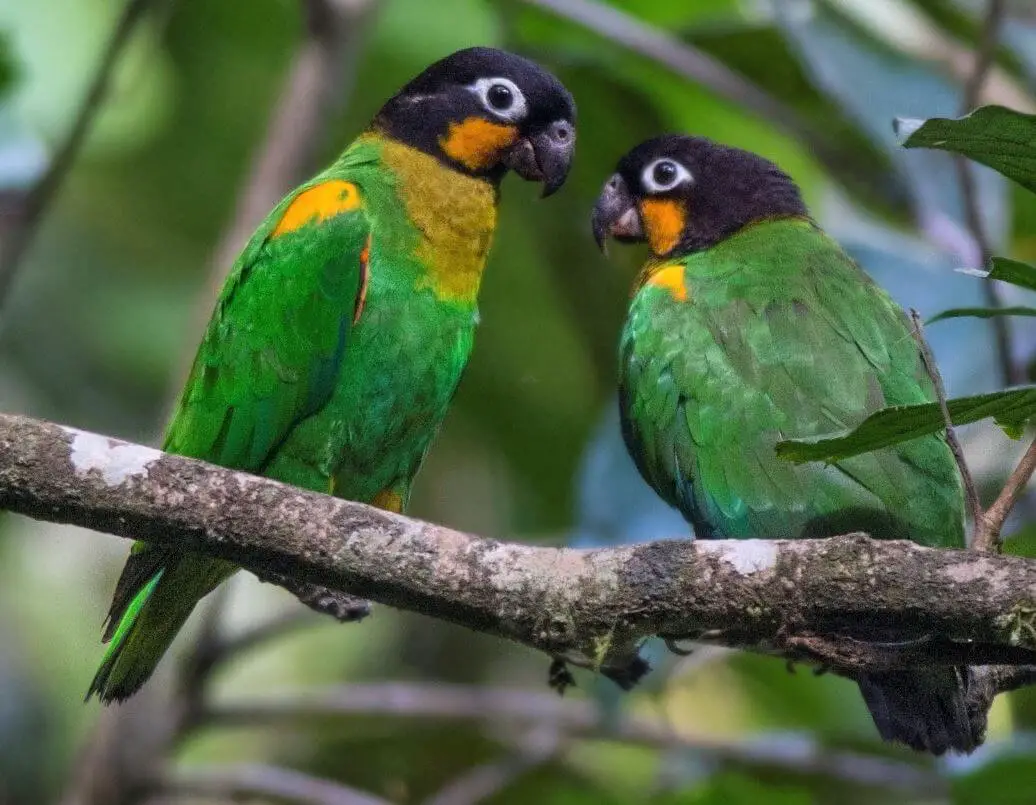 Two subspecies of the Orange-cheeked Parrot are recognized over the species’ relatively large, primarily western and central Amazonian range, which extends from southeast Colombia and southern Venezuela south across much of Amazonian Brazil, except the extreme east, to northernmost Bolivia.
Two subspecies of the Orange-cheeked Parrot are recognized over the species’ relatively large, primarily western and central Amazonian range, which extends from southeast Colombia and southern Venezuela south across much of Amazonian Brazil, except the extreme east, to northernmost Bolivia.Orange-cheeked Parrot 25 cm; 165–190 g (mean also given as 140 g). Head black circumscribing large orange-yellow malar patch and white bare orbital ring; throat and upper breast olive-yellow; rest of body green, but with shoulder orange-yellow, carpal edge and underwing-coverts red, primaries blackish, thighs yellow, tail tipped dull blue.

Immature has head brown and olive, less orange and red in a wing. Race aurantiigena has a richer orange malar patch, shoulder, and thighs.
Systematics History
Editor’s Note: This article requires further editing work to merge existing content into the appropriate Subspecies sections. Please bear with us while this update takes place.
May form a parapatric species-trio with P. caeca and P. vulturine. Two subspecies were recognized.

Subspecies
Pyrilia barrabandi barrabandi Scientific name definitions
Distribution
Pyrilia barrabandi aurantiigena Scientific name definitions
Distribution
Distribution
Editor’s Note: Additional distribution information for this taxon can be found in the ‘Subspecies’ article above. In the future, we will develop a range-wide distribution article.
Habitat
Like P. caeca a bird of primary lowland terra forest, but sometimes also in seasonally flooded várzea forest, and sandy-belt woodland; ranges up to only 500 m.
Orange-cheeked Parrot at Claylick in Tambopata Reserve, Peru
SOURCE: JACAMAR CLUB – Birding In Action
Diet and Foraging
Seeds and fruits: of six food plants, three were Moraceae (Ficus, Pourouma, and Pseudolmedia), two Leguminosae (Mimosa and Pithecellobium), and one Olacaceae (Heisteria); figs, e.g. of Ficus and another with larger fruit, clearly important.
Seen biting leaf galls on Pithecellobium trees, presumably for wasp larvae. Recorded also feeding on flowers.
Sounds and Vocal Behavior
The most common call is a reedy, almost bisyllabic “chureee” (somewhat reminiscent of Pionus menstruous), given both in flight and perched. Occasionally gives a loud rapid chatter “kya-kya-kya”, usually when taking off.
Breeding
Probably Sept-Oct in E of range, based on immatures in Feb. No further data.
Orange-cheeked Parrots in Peru
SOURCE: World Parrot Trust
Conservation Status

Not globally threatened. CITES II. Currently considered Near Threatened. Generally uncommon and local, but occasionally frequent to numerous in W parts of the range, e.g. N Bolivia, this is possibly related to the scarcity of Pionus menstruous and Amazona species in the region.
Present in Manu National Park, Peru, where density reaches 0·5 pairs/km². Habitat for this species is still very extensive and intact, despite encroachments from E and S, and trade is minimal.




















